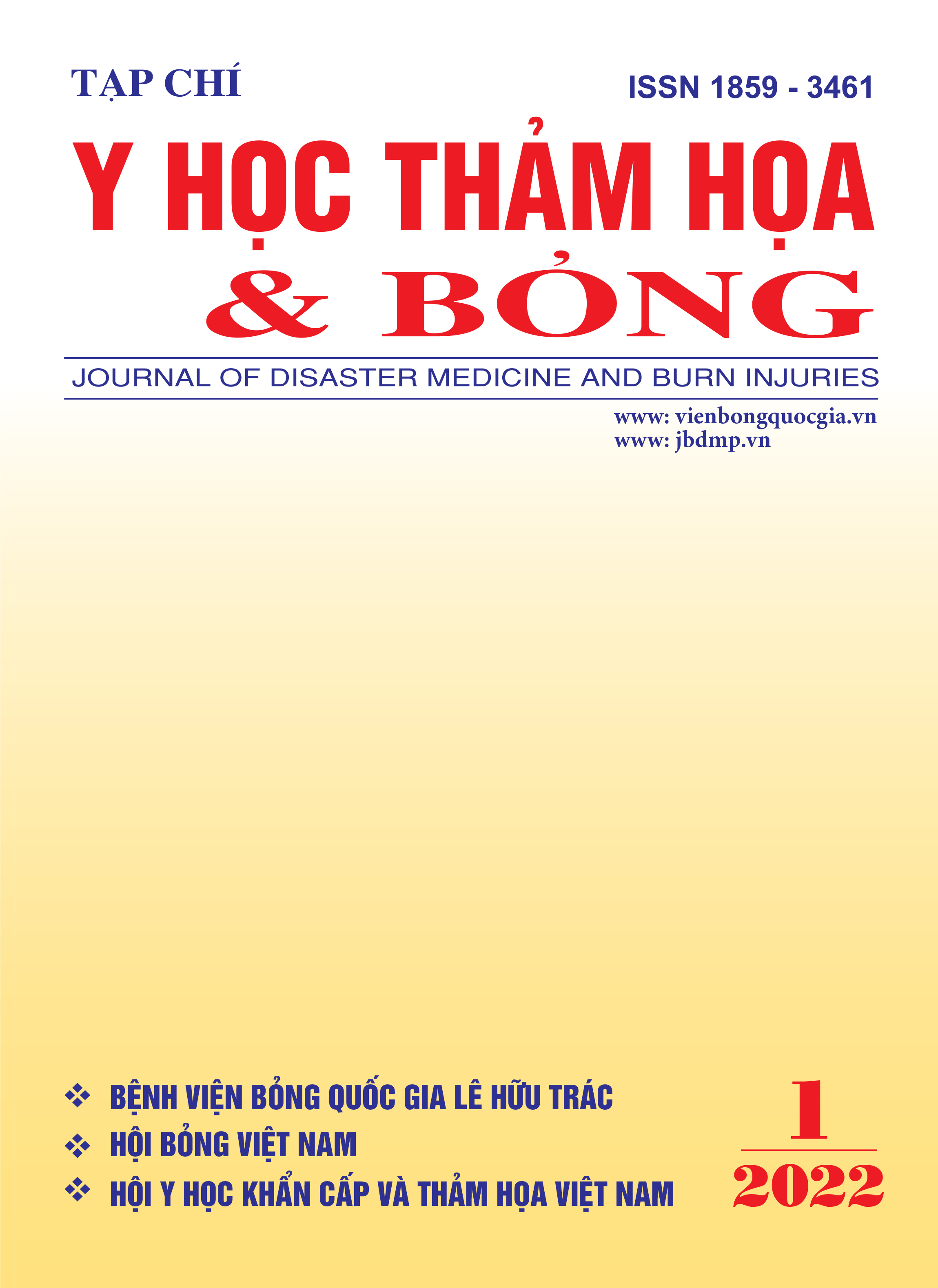Characteristics of the arterial blood lactate and base excess in burns patients on hospital admission
Main Article Content
Abstract
Objectives: To evaluate the relationship and prognostic value of the admission arterial blood Lactate and base excess to mortality in severe burn patients.
Subjects and methods: Prospective study on 121 adult severe burn patients admitted within 72 hours after-burn at the National Burns Hospital from 1/1/2021 to 31/12/ 2021. Patients were divided into two groups of survival and death and were compared in terms of the arterial blood Lactate and base excess at admission.
Results: The arterial blood Lactate and base excess was significantly higher (p < 0.001) in the death group compared with the survival group at admission. The predictive value of mortality of the arterial blood lactate and base excess was good (AUC = 0.82; 95% CI: 0.74 - 0.9; cut-off: 4mmol/l; sensitivity: 79, 17%; specificity: 74.23%; accuracy: 75.21%; p = 0.0000) and quite (AUC = 0.77; 95% CI: 0.66 - 0.88; cut-off: 5.4mmol/l; sensitivity: 83.33%; specificity: 68.04%; accuracy: 71.07%; p = 0.0000). However, the results of multivariate analysis showed that these two indexes did not have an independent effect on mortality.
Conclusion: The predictive value of mortality of the arterial blood Lactate and base excess was good and quite, however, there was no independent effect on mortality. More research is needed to apply this index in the prognosis of patients with severe burns.
Article Details
Keywords
Burns, base excess, Lactate, prognosis value
References
2. Kamolz L.-P., Andel H., Schramm W.et al. (2005) Lactate: early predictor of morbidity and mortality in patients with severe burns. Burns, 31 (8), 986-990.
3. Andel D., Kamolz L.-P., Roka J.et al. (2007) Base deficit and lactate: early predictors of morbidity and mortality in patients with burns. Burns, 33 (8), 973-978.
4. Cochran A., Edelman L. S., Saffle J. R.et al. (2007) The relationship of serum lactate and base deficit in burn patients to mortality. Journal of burn care & research, 28 (2), 231-240.
5. Jeng J. C., Jablonski K., Bridgeman A.et al. (2002) Serum lactate, not base deficit, rapidly predicts survival after major burns. Burns, 28 (2), 161-166.
6. Brusselaers N., Monstrey S., Vogelaers D.et al. (2010) Severe burn injury in Europe: a systematic review of the incidence, etiology, morbidity, and mortality. Critical care, 14 (5), 1-12.
7. Armstrong R., Mackersie A., McGregor A.et al. (1977) The respiratory injury in burns. An account of the management. Anaesthesia, 32 (4), 313-319.
8. Lam N. N., Hung N. T., Duc N. M. (2021) Prognosis value of revised Baux score among burn patients in developing country. International Journal of Burns and Trauma, 11 (3), 197.
9. Smith I., Kumar P., Molloy S.et al. (2001) Base excess and lactate as prognostic indicators for patients admitted to intensive care. Intensive care medicine, 27 (1), 74-83.
10. Saad S., Mohamed N., Moghazy A.et al. (2016) Venous glucose, serum lactate and base deficit as biochemical predictors of mortality in patients with polytrauma. Ulus Travma Acil Cerrahi Derg, 22 (1), 29-33.


